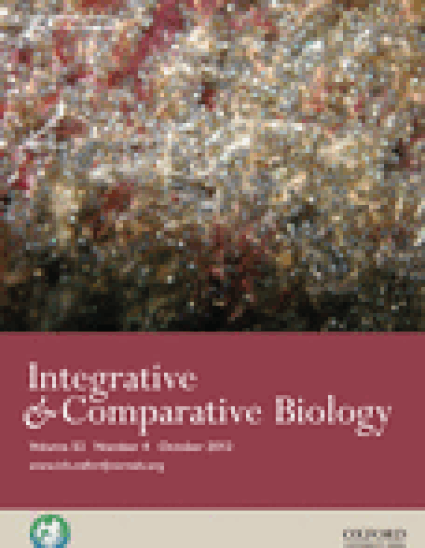
Article
Dispersal of Deep-Sea Larvae from the Intra-American Seas: Simulations of Trajectories using Ocean Models
Integrative & Comparative Biology
(2012)
Abstract
Using data on ocean circulation with a Lagrangian larval transport model, we modeled the potential dispersal distances for seven species of bathyal invertebrates whose durations of larval life have been estimated from laboratory rearing, MOCNESS plankton sampling, spawning times, and recruitment. Species associated with methane seeps in the Gulf of Mexico and/or Barbados included the bivalve “Bathymodiolus” childressi, the gastropod Bathynerita naticoidea, the siboglinid polychaete tube worm Lamellibrachia luymesi, and the asteroid Sclerasterias tanneri.Non-seep species included the echinoids Cidaris blakei and Stylocidaris lineata from sedimented slopes in the Bahamas and the wood-dwelling sipunculan Phascolosoma turnerae, found in Barbados, the Bahamas, and the Gulf of Mexico. Durations of the planktonic larval stages ranged from 3 weeks in lecithotrophic tubeworms to more than 2 years in planktotrophic starfish. Planktotrophic sipunculan larvae from the northern Gulf of Mexico were capable of reaching the mid-Atlantic off Newfoundland, a distance of more than 3000 km, during a 7- to 14-month drifting period, but the proportion retained in the Gulf of Mexico varied significantly among years. Larvae drifting in the upper water column often had longer median dispersal distances than larvae drifting for the same amount of time below the permanent thermocline, although the shapes of the distance–frequency curves varied with depth only in the species with the longest larval trajectories. Even species drifting for >2 years did not cross the ocean in the North Atlantic Drift.
Keywords
- Larvae dispersal,
- Ocean models,
- Deep-sea larvae
Disciplines
Publication Date
October, 2012
DOI
https://doi.org/10.1093/icb/ics090
Publisher Statement
Copyright © 2018 Oxford University Press
Citation Information
Craig M. Young, Ruoying He, Ricahrd B. Emlet, Yizhen Li, et al.. "Dispersal of Deep-Sea Larvae from the Intra-American Seas: Simulations of Trajectories using Ocean Models" Integrative & Comparative Biology Vol. 52 Iss. 4 (2012) p. 483-496 Available at: http://works.bepress.com/shawn-arellano/5/
